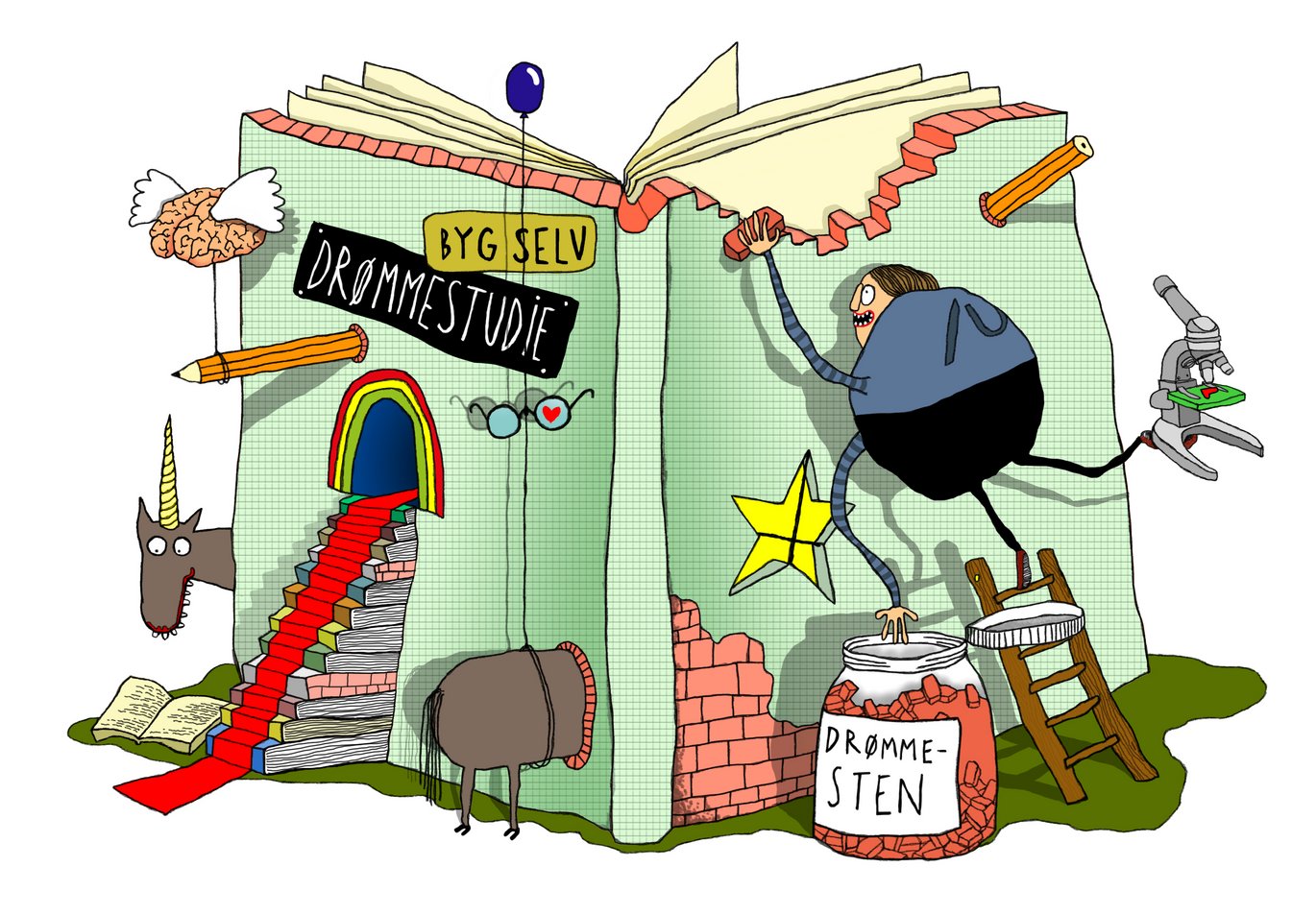The degree programme of your dreams is something you build yourself

By Sara Dybris McQuaid, assistant professor of British and Irish history, society and culture, and Lone Koefoed Hansen, associate professor of digital design.
‘The degree programme of your dreams’. Taste the words. We hear them in the media, when study places are allocated by the Coordinated Enrolment System (KOT), and in ads from educational institutions: Find the degree programme of your dreams! Did (or didn’t) you get a place on the degree programme of your dreams? The degree programme of your dreams is waiting for you!
The idea is that the degree programme of your dreams is out there somewhere, waiting for young people searching for an education, knowledge and a job sometime in the future, to enrol with a view to absorbing its ‘spirit and ‘nature’. Find the right degree programme and your happiness will be complete.
However, it is both misleading and problematic to describe ’the degree programme of your dreams’ as an entity in itself. This suggests that a degree programme is something you as a student must relate to as a completed form. A finished architecture that you can step into and go through. Where all the walls are fixed and each room has its own function. It implies a passive relation, and if the degree programme of your dreams disappoints (or you don't even get enrolled) then there is no scope to change your stay and you can simply leave the building.
That’s not viable of course, so let’s start over.
‘The degree programme of your dreams’. Taste the words. Now let’s think of it as something you do, not something that is; as an action, not an entity. What happens when we understand the degree programme of your dreams as an action?
Firstly, we have to abandon the idea that it’s something static. A student does not step into a finished structure. Instead, he or she is an active co-architect who helps to build it using the materials which are made available. In this way, the degree programme of your dreams becomes a more organic structure – for example, like a drystone wall. A drystone wall does not have a predetermined design. It is determined by the shape of the individual stones and the way they are laid. To paraphrase the words of the political philosopher Oakeshott, you can use the drystone wall as a metaphor for studying. It illustrates how a degree programme is made up of individual parts which are slowly constructed in an interaction between the compulsory courses and the supplementary subjects chosen by a student. The design of the drystone wall is partially determined by how you choose to put the stones together and partially by the landscape in which you build it.
The metaphor points towards the high degree to which a student may, and is even expected to, shape his or her own degree programme. Not only by choosing subjects but also by continuously updating his or her idea of the finished shape while still working on it. The degree programme of your dreams understood as an action is not about looking inwards or about abstract ideas. It is about familiarising yourself with the terrain and finding the stones which can be used. The good drystone wall builder learns to lay stones in the right way, to make the most of his materials, to ask for help in lifting the heavy stones into place. And he sees finding the right place for stones that do not seem to fit as a challenge. To extend Oakeshott’s metaphor, we might add that you also need to find completely different types of materials that can be inserted here and there, so the wall becomes as beautiful or solid or fun as possible.
When we understand the degree programme of your dreams as an action, then finding your way through life with the help of your degree programme becomes a relational and contextual process. It comes to depend on your engagement in study groups, your study techniques and student jobs, and on learning from others while also learning from your own mistakes. When viewed from this perspective, the degree programme becomes not a dream vision but a concrete action: thanks to your own efforts, it takes form, becoming a sturdy, durable structure that you can look back on with pride. This takes the right building materials and the right help, but it also requires that you yourself judge, lift, reconsider and add as you build. And not least that you understand that the degree programme of your dreams is something you build and that it is something you can build in many places.
Translated by Peter Lambourne

